31.3.12
23.3.12
EDIBLE MUSHROOMS OF NORTHWESTERN AMERICA
Boletus edulis (King bolete)

Cantharellus cibarius (Chanterelle)
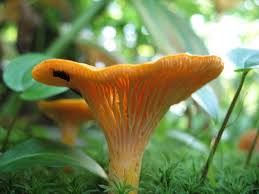
Cantharellus formosus (Chanterelle)
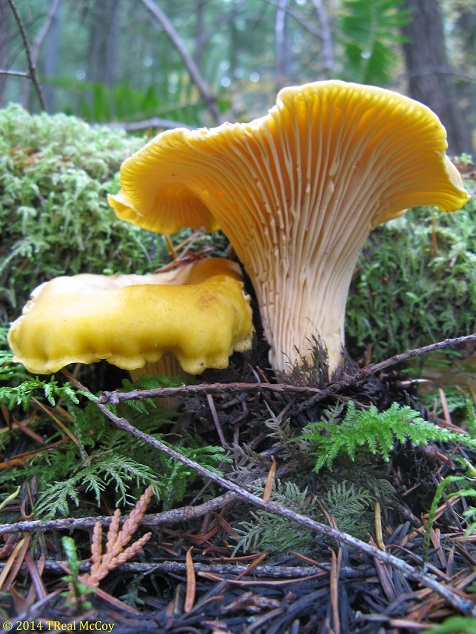
Cantharellus subalbidus (White chanterelle)

Coprinus comatus (Shaggy mane)
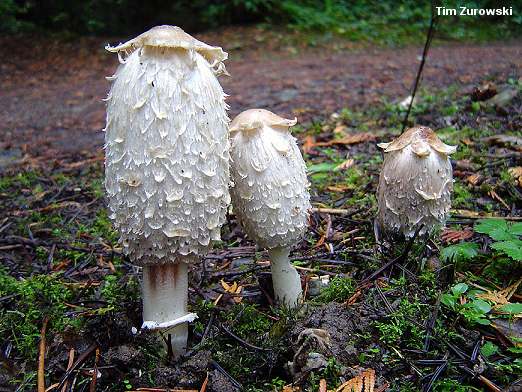

Cortinarius caperatus (Gypsy mushroom)


Craterellus cornucopiodes (Horn of plenty)

Hydnum repandum (Hedgehog)


Hypomyces lactifluorum (Lobster)
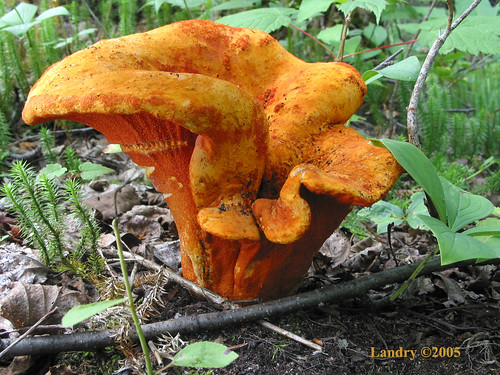
Leccinum insigne (Aspen bolete)
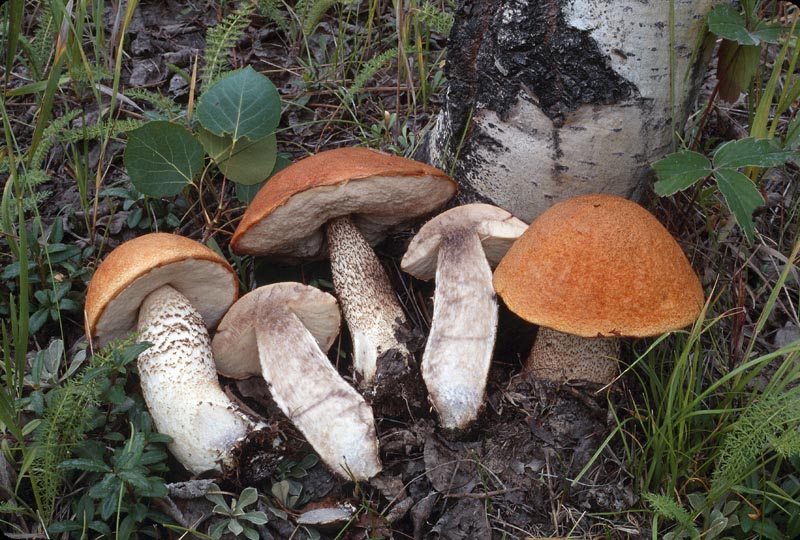
Leccinum seabrum (Birch bolete)

Morchella elata (Black morel)

Morchella esculenta (Yellow or white morel)
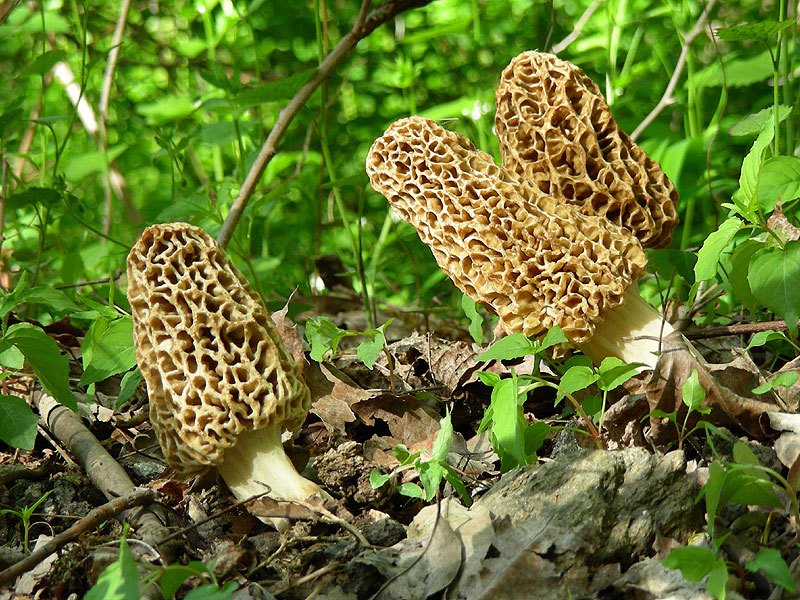
Pleurotus ostreatus (Oyster)


Polyozellus multiplex (Blue chanterelle)
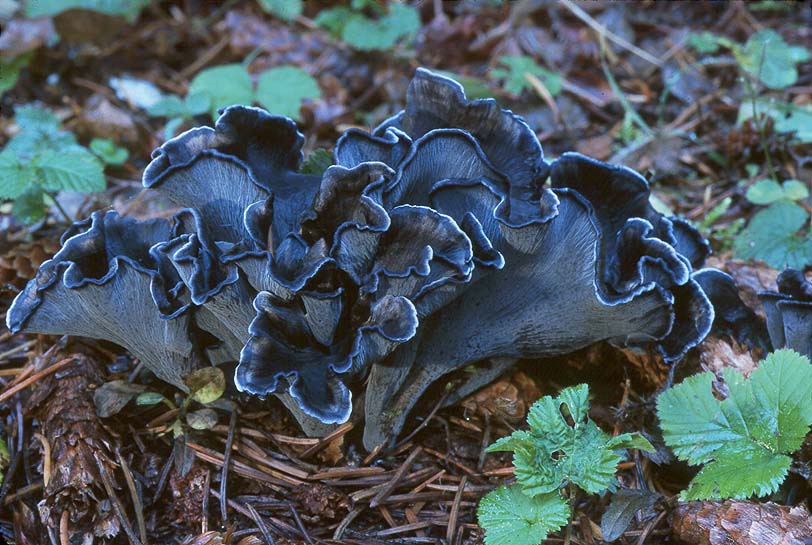
Sparassis crispa (Cauliflower)

Tricholoma matsutake (Pine mushroom)

Tuber gibbosum (Oregon white truffle)

Cantharellus cibarius (Chanterelle)
Cantharellus formosus (Chanterelle)
Cantharellus subalbidus (White chanterelle)

Coprinus comatus (Shaggy mane)


Cortinarius caperatus (Gypsy mushroom)


Craterellus cornucopiodes (Horn of plenty)



Hypomyces lactifluorum (Lobster)

Leccinum insigne (Aspen bolete)

Leccinum seabrum (Birch bolete)

Morchella elata (Black morel)

Morchella esculenta (Yellow or white morel)

Pleurotus ostreatus (Oyster)


Polyozellus multiplex (Blue chanterelle)

Sparassis crispa (Cauliflower)

Tricholoma matsutake (Pine mushroom)

Tuber gibbosum (Oregon white truffle)
Poinsettia
Height
Control and Monitoring
Height monitoring will be an ongoing process. Initially we'll receive 15" tall oasis plugs, with the overall height we hope to achieve by December 10th being 35-40cm tall with a 40cm spread. They will be potted into 6" pots. We will be measuring and recording the height of our crop twice a week with a marked measuring stick and creating a graph to monitor the growth rate. Measurements will be taken at the base of the pot. We will record the growth by comparing the data with our previous recordings using a graph, with manipulations being made as needed. We will mark random pots in different areas of the greenhouse and record their growth twice a week. Different positions in the greenhouse (front, middle and back), lighting, temperatures, and spacing may result in plants in one area of the greenhouse growing slightly differently then plants in another part and we want to do our best to maintain consistent conditions and a uniform crop.
We will be paying close attention to many factors, such as height, length between internodes, and stem elongation.Internode stretch, which results in the plants becoming too leggy, often occurs when temperatures are higher in the day then at night. Stem elongation (which we talk about more under 'Bench Spacing') will need to result in the plant reaching its desired height of 35 - 40cm.
Our cultivars most abundant growth will be in the final 2-3 weeks. With this is mind, we will do our final spacing at week 5-6 which will allow the plants more room to grow without their leaves touching. Plant growth regulators (PGR's) may be used depending on our estimated plant growth and the actual growth, but should not be used too late in the season. They need to be applied precisely on exact dates and in appropriate amounts to avoid situations where the bract colour, development and/or size may become distorted. We will try to avoid using PGR's, as we have a reliable computerized environmental control system, and focus more on DIP's and DIF's (difference between day and night temps with the night temps being equal or higher). A morning ‘DIP’ of 2 to 3°C for two hours starting just before dawn has proved as effective as all night positive DIF. By monitoring the DIF we will prevent the plants from growing leggy and, along with the other practices mentioned, produce a higher quality crop.
Height monitoring will be an ongoing process. Initially we'll receive 15" tall oasis plugs, with the overall height we hope to achieve by December 10th being 35-40cm tall with a 40cm spread. They will be potted into 6" pots. We will be measuring and recording the height of our crop twice a week with a marked measuring stick and creating a graph to monitor the growth rate. Measurements will be taken at the base of the pot. We will record the growth by comparing the data with our previous recordings using a graph, with manipulations being made as needed. We will mark random pots in different areas of the greenhouse and record their growth twice a week. Different positions in the greenhouse (front, middle and back), lighting, temperatures, and spacing may result in plants in one area of the greenhouse growing slightly differently then plants in another part and we want to do our best to maintain consistent conditions and a uniform crop.
We will be paying close attention to many factors, such as height, length between internodes, and stem elongation.Internode stretch, which results in the plants becoming too leggy, often occurs when temperatures are higher in the day then at night. Stem elongation (which we talk about more under 'Bench Spacing') will need to result in the plant reaching its desired height of 35 - 40cm.
Our cultivars most abundant growth will be in the final 2-3 weeks. With this is mind, we will do our final spacing at week 5-6 which will allow the plants more room to grow without their leaves touching. Plant growth regulators (PGR's) may be used depending on our estimated plant growth and the actual growth, but should not be used too late in the season. They need to be applied precisely on exact dates and in appropriate amounts to avoid situations where the bract colour, development and/or size may become distorted. We will try to avoid using PGR's, as we have a reliable computerized environmental control system, and focus more on DIP's and DIF's (difference between day and night temps with the night temps being equal or higher). A morning ‘DIP’ of 2 to 3°C for two hours starting just before dawn has proved as effective as all night positive DIF. By monitoring the DIF we will prevent the plants from growing leggy and, along with the other practices mentioned, produce a higher quality crop.
 |
production. Dots indicate height each week. Arrows indicate when
PGR's were applied, if applied.
Temperature/Light Regime
Light and temperature are responsible for the time required for our plants to go from short days to visible pollen. Natural light begins to lower in early September, but since our greenhouse is located next to a sports field with night time lighting, we will need to use our retractable blackout curtains and shading system throughout the fall and winter to manipulate light levels that remain below 12 hours a day. For initiating flowering, we will actually be using 10 hours of light and 14 hours of dark with the help of our photoperiod extension lighting system. This will encourage proper flower development and prevent accidental delay. For Freedom, we can keep the plants lit until early October to delay flowering until our desired December 10th sale date.
Temperature will be maintained using under bench hot water heating and computerized environmental controls. The night time temperature will be kept at 18ºC while the day temp will be around 20ºC, adjusting it for DIF or morning DIP's as needed. DIP's become useful when we move move into shorter days or the dark-out cycle. As mentioned under height control, the plant will become too leggy if the temperature is higher in the day then at night, so monitoring DIP is important. Our freedom cultivar in particular is more cold-friendly then other varieties and can tolerate lower temperatures.
As our desired plant sales date is December 10th, we will need to remove our shading curtains by early September, which is when natural light levels will being to fall. Proper humidity must be maintained in this time of low light to assure that the plants continue actively growing, and should be kept below 75-80 Rh depending on the precise conditions of our greenhouse at that time. If they exceed those levels, the risk of acquiring diseases raises due to oxygen-starved roots and the inability to transpire.
The
above image depicts a poinsettia crop beneath manual blackout
curtains used to manipulate light levels. For our poinsettia crop, we
will be using retractable shading and dark-out curtains as the plants
will be exposed to sports field lights at night.
If we use the blackout cloth for 13 hours a day before naturally shorter days that september brings, the plants will flower earlier and need all pre-scheduled dates to be adjusted. It is of benefit for us to be aware that plants grown in lower temperatures often exhibit smaller bract sizes and need to be pinched 1-2 weeks earlier to meet the desired deadline. Once pollen appear, bract growth will tend to slow. This is the ideal time harden off the plants by gradually lowering the temperature a maximum of 1ºC a day, which will begin to intensify the bract color. Finished plants can be held at 16-17ºC until shipped.
Timing of Production PhasesThe desired flowering date and arrival of cuttings have given rise to this production schedule.
The timing of phases will look as follows:
If we use the blackout cloth for 13 hours a day before naturally shorter days that september brings, the plants will flower earlier and need all pre-scheduled dates to be adjusted. It is of benefit for us to be aware that plants grown in lower temperatures often exhibit smaller bract sizes and need to be pinched 1-2 weeks earlier to meet the desired deadline. Once pollen appear, bract growth will tend to slow. This is the ideal time harden off the plants by gradually lowering the temperature a maximum of 1ºC a day, which will begin to intensify the bract color. Finished plants can be held at 16-17ºC until shipped.
Timing of Production PhasesThe desired flowering date and arrival of cuttings have given rise to this production schedule.
The timing of phases will look as follows:
| Week 1 (week 32: Early-Mid August) | -Plant oasis plugs into 6" Pro-Mix BX filled pots -Water in with fresh water- subsequent watering will include varying strengths of fertilizers -Pots will be spaced pot tight on benches -Measure the plants and begin a graphical chart that will indicate height growth- data will be taken on an ongoing basis twice a week |
| Week 1-5 (Week 32-37August - Sept) | -Establish roots on cuttings DOWN -Pinch to promote multi-stemmed compact habit and scheduled flowering around week |
| Week 5-6 (week 37-38: Early - Mid Sept) | -Final-spacing (1.2-1.5 sq.ft. apart) |
| Week 9 (week 41: End of Sept - Early Oct ) | -Flower initiation/Shorter days -Blackout period begins (days become shorter then nights) which will enhance bract color -Blackout curtains will be used for 14 hours at night, and removed for 10 hours during the day |
| Week 10-18 (Weeks 41-49: Mid Oct to early Dec) | Plants are in the dark-out cycle |
| Week 19 (Week 50: Dec 10) | Finish week: Plants are ready to sell |
*Please note: All of these dates are an estimation, and considerations and manipulations may need to made as the crop progresses.
It takes 8 weeks for the Freedom cultivar to finish, at which point we will begin the dark-out (10 hours light and 14 hours dark) or short day cycle until the time the plant is ready to sell. To find these dates for scheduling we worked backwards from the sale date (Dec 10th), added 8 weeks for the dark-out period, 3 weeks for the pinch and 5 weeks for the planting date.
Bench
Spacing
Spacing will play a large role in the plants final height, strength and quality. Performed properly, it will also reduce the use of chemical growth retardants. Initially the 6" potted poinsettias should be spaced pot-tight on the benching system. By tightly spacing the pots, a microclimate is created amid the young, vegetative plants with higher humidity levels and reduced airflow. Too much airflow will result the plants drying out faster, developing leaf scarring and other symptoms of environmental stresses. Keeping the plants tight will encourage strong v-shaped architecture and drive vertical growth, making the plant stronger and more resistant to stem breakage. After about 7 weeks of having the plants pot-to-pot, their bottom leaves will begin to touch, which indicates that it is time to final space. The final spacing for our pots will be 1.2-1.5 sq.ft. If the poinsettias are left pot-to-pot once their leaves touch then a 'shade avoidance response' may occur resulting in etiolation, or weakened long, thin stems and an overall poor quality crop.
Spacing will play a large role in the plants final height, strength and quality. Performed properly, it will also reduce the use of chemical growth retardants. Initially the 6" potted poinsettias should be spaced pot-tight on the benching system. By tightly spacing the pots, a microclimate is created amid the young, vegetative plants with higher humidity levels and reduced airflow. Too much airflow will result the plants drying out faster, developing leaf scarring and other symptoms of environmental stresses. Keeping the plants tight will encourage strong v-shaped architecture and drive vertical growth, making the plant stronger and more resistant to stem breakage. After about 7 weeks of having the plants pot-to-pot, their bottom leaves will begin to touch, which indicates that it is time to final space. The final spacing for our pots will be 1.2-1.5 sq.ft. If the poinsettias are left pot-to-pot once their leaves touch then a 'shade avoidance response' may occur resulting in etiolation, or weakened long, thin stems and an overall poor quality crop.
 |
| This image mimics the final bench spacing we will do for our Freedom cultivar. The pots will be spaced 1.2-1.5 sq.ft. apart. |
Bibliography:
Bench spacing photo:
http://www.bpoaonline.co.uk/News/BPOA-and-HDC-Poinsettia-meeting/
Black out curtain image:
http://www.thctalk.com/cannabis-forum/showthread.php?37679-Outdoor-move-to-greenhouse-darken
Heights throughout crop production graph image:
http://hort.ifas.ufl.edu/floriculture/poinsettia/2005/FR.shtml
Information on bench spacing:
http://www.lsuagcenter.com/NR/rdonlyres/5EFC9AA7-EE45-43EE-BA0A-31159C7DE40C/3845/poinsettiaextensionpublication.pdf
Information on crop scheduling:
http://www.ag.auburn.edu/hort//landscape/poinset.htm
http://www.agf.gov.bc.ca/ornamentals/floriculture/points.pdf
http://www.ecke.com/ecke/?page_id=400
http://www.lsuagcenter.com/NR/rdonlyres/5EFC9AA7-EE45-43EE-BA0A-31159C7DE40C/3845/poinsettiaextensionpublication.pdf
Bench spacing photo:
http://www.bpoaonline.co.uk/News/BPOA-and-HDC-Poinsettia-meeting/
Black out curtain image:
http://www.thctalk.com/cannabis-forum/showthread.php?37679-Outdoor-move-to-greenhouse-darken
Heights throughout crop production graph image:
http://hort.ifas.ufl.edu/floriculture/poinsettia/2005/FR.shtml
Information on bench spacing:
http://www.lsuagcenter.com/NR/rdonlyres/5EFC9AA7-EE45-43EE-BA0A-31159C7DE40C/3845/poinsettiaextensionpublication.pdf
Information on crop scheduling:
http://www.ag.auburn.edu/hort//landscape/poinset.htm
http://www.agf.gov.bc.ca/ornamentals/floriculture/points.pdf
http://www.ecke.com/ecke/?page_id=400
http://www.lsuagcenter.com/NR/rdonlyres/5EFC9AA7-EE45-43EE-BA0A-31159C7DE40C/3845/poinsettiaextensionpublication.pdf
17.3.12
9.3.12
Subscribe to:
Posts (Atom)














































































